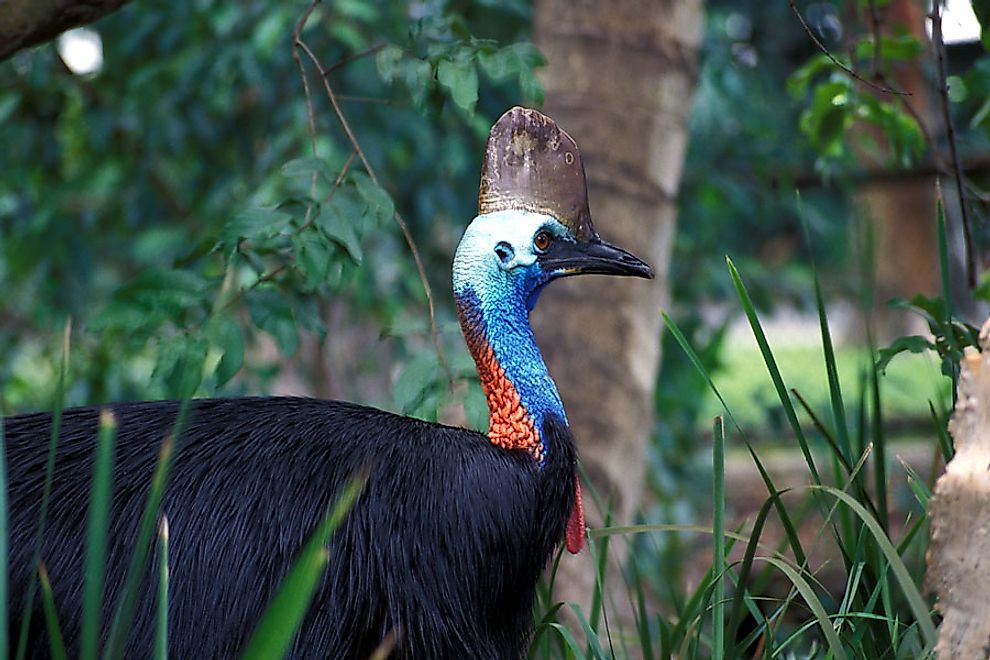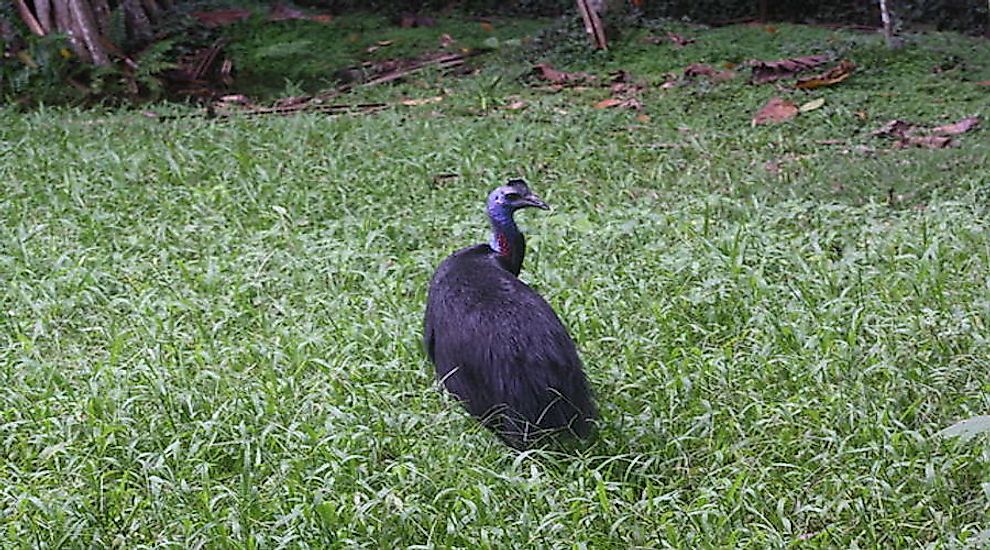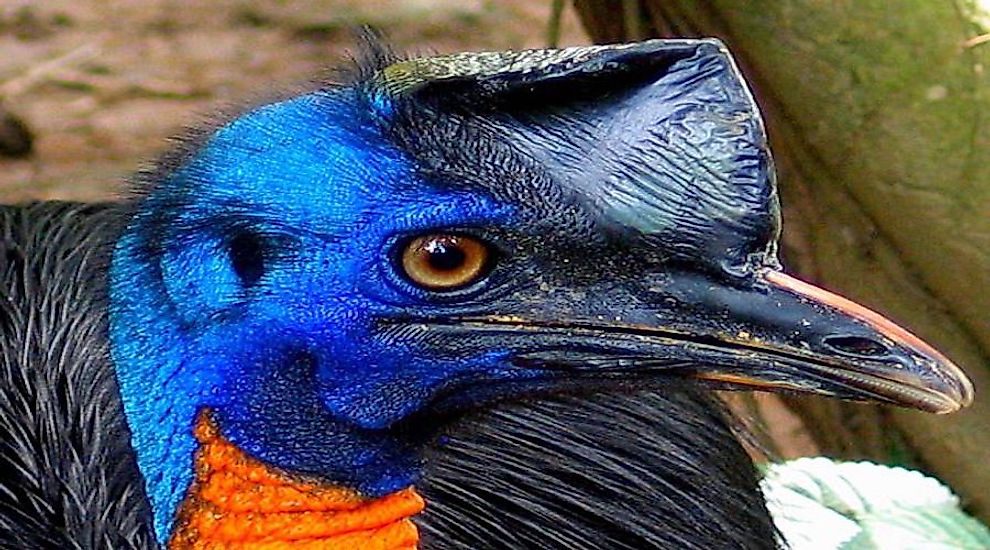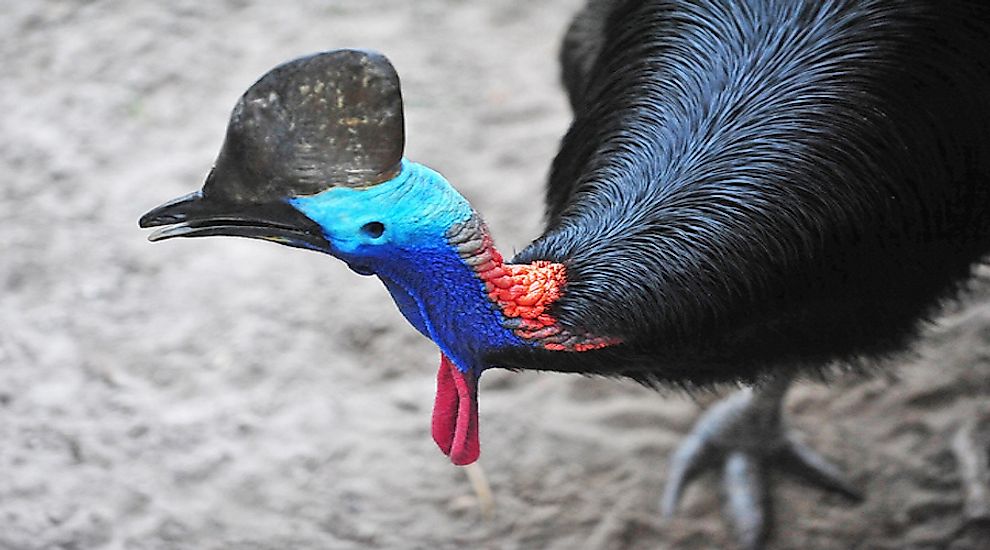The Three Species Of The Cassowary Bird Living Today

The cassowaries are ratites in the genus Casuarius that live in New Guinea’s tropical forests and the nearby islands. Populations of cassowaries are also found in northeastern Australia. The birds are flightless and are one of the heaviest birds in the world. The cassowaries can be classified into three extant species as mentioned below.
3. Dwarf Cassowary

The dwarf cassowary (Casuarius bennetti) is the smallest among the three cassowary species. The birds inhabit the mountain forests of Yapen Island, New Britain, and New Guinea where they live at elevations of up to 10,800 feet. Although it is smaller than other cassowaries, it is still a large bird. The length of the bird varies between 99 and 150 cm and their weight varies from 17.6 to 26 kg. The birds have a stiff black plumage, blue neck with red skin patches, and pink cheeks. The casque on the head is short and triangular in shape. Similar to other cassowaries, these birds also possess deadly claws on their inner toe. The dwarf cassowaries feed on tiny animals, insects, and fallen fruits. The birds are classified as "near threatened" due to habitat loss and degradation, and high rates of hunting and capture by humans.
2. Northern Cassowary

The northern cassowary (Casuarius unappendiculatus) of northern New Guinea is a massive, stocky flightless bird. The bird is endemic to northern New Guinea’s lowland rainforests and coastal swamps. They are also found in the Salawati, Batanta, and Yapen islands. These birds prefer to live at elevations below 1,610 feet. The northern cassowary has a blue face, casque on the head, and a bright red or yellow wattle and neck. The feet are well-equipped with a dagger-like claw on the inner toe. These birds are about 149 cm in length and between 1.5 to 1.8 m in height. The northern cassowaries are shy and solitary birds which feed on a diet mainly consisting of fruits and small animals. Females are polygamous in nature while the male raises chicks for about nine months. Hunting is the biggest threat to the survival of the northern cassowary while habitat loss is also highly prevalent. Bones and eggs of the cassowary are collected by the natives while the chicks are captured for meat.
1. Southern Cassowary

The southern cassowary (Casuarius casuarius) is a large, black, flightless bird that is distributed in northeastern Australia, New Guinea, and Indonesia. Within their range, these birds inhabit mainly tropical rainforests. They also can be occasionally observed in savannahs and mangrove stands within their range. The southern cassowary prefers to live at elevations below 1,600 feet in New Guinea and below 3,600 feet in Australia. The bird is the largest of all cassowary species and the second heaviest bird on the planet. The females are larger weighing about 58.5 kg while males weigh around 29 to 34 kg. The Southern cassowary has a blue face, two red wattles hanging down from the throat, and a stiff and bristly black plumage. The bird also adorns a horn-like casque at the top of its head. The bird’s feet are three-toed and have lethal dagger-like claws on the inner toe. The Southern cassowary feeds on fallen fruit on the forest floor as well as small vertebrates, insects, and fungi. It pairs only in the breeding season and is otherwise solitary in nature. The bird is capable of killing humans, dogs, and other organisms if provoked. It is categorized as "vulnerable" by the IUCN since the population of the bird is decreasing due to overhunting and habitat loss.











